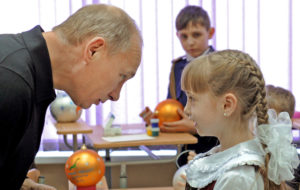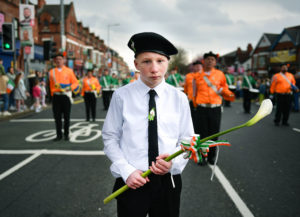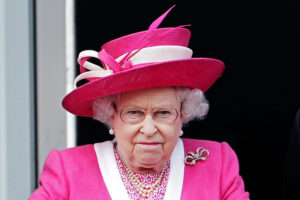Royals are not like the rest of us, and never have been. These days it is their public-facing glass-bowl lives which marks them out — as well as their wealth. But in past centuries, with no paparazzi, Britons were more likely to see an image of their monarch on a coin than on the television or the front page of a gossip magazine.
Instead, it was extreme privilege that defined royals back then. Today a very large part of the public can afford fancy dining, expensive hotels, and foreign travel — at least from time to time — and most can expect to retire to a comfortable bed in a pleasantly ambient temperature. But not so long ago these were the prerogatives of only a small share of the population, at the top of which sat royalty.
Yet despite their elite lifestyles, monarchs and their consorts can tell us a surprising amount about how life in Britain has changed over the past 300 years, and in no department more than that of demography. In fact, the whole demographic story of Britain since the early 18th century can be told through the reproductive history of four queens.
Let’s start with Queen Anne who came to the throne in 1702. Her sister Mary had died childless in her early thirties — a death immortalised by the funeral music of Henry Purcell, who followed her to the graveyard within less than a year. Mary’s husband William III — first cousin of Mary and Anne as well as Mary’s fellow monarch — died some years later in his early fifties with no heir, so the throne passed to Anne. By the time Anne died, just short of 50 years of age, she had apparently had 18 pregnancies, and although one of her offspring did make it past infancy, he did not survive his mother. And so, with Anne’s Catholic half-brother excluded for religious reasons, the call went out to distant — Protestant — relations in Hanover.
The reason that Anne’s reproductive failures are of interest is that they stand as an extreme but not atypical example of the sad human condition for most of history, during which not even royalty could shield an individual from the cruelty of nature. This was the unchanging world which the Reverend Thomas Malthus described a century later, in which humans bred like rabbits and died like flies. Populations pressed forwards like Europe’s in the Middle Ages, only to be pushed back by plague or war. Ultimately humans stretched the limits of the planet’s carrying capacity at a time when crop yields were still very meagre and hunger never far off for most of the population.
But the world which Malthus described as eternal was coming to an end. Already in Malthus’s day, death rates were plunging, life expectancies extending and the population growing rapidly. A few years after his death the young Victoria came to the throne: her reign would redefine population patterns in the British Isles and set a precedent which was to spread well beyond it. Victoria had nine children and each of them outlived her, even though she managed to live a good three decades longer than Anne. Again, this is exemplary of trends at the time but a rather extreme example; infant mortality remained very high and only began falling towards the end of Victoria’s reign. To be survived by nine out of nine children was indeed a feat, but far less miraculously atypical than it would have been a century or two earlier.
Britain’s population explosion under Queen Victoria was one of the most significant events of the 19th century. As well as providing a ready labour force to transform the country into the workshop of the world, it supplied a huge excess population that settled in colonies from Vancouver to Tasmania. The Anglosphere as we know it today could not have come into existence without the millions who left the British Isles and settled new lands, creating Canada, Australia, and New Zealand. And until the latter years of the 19th century — when other European countries started to follow suit and export their surplus citizens — the people of the United Kingdom provided the bulk of the inflow that turned the United States from a handful of colonies hugging the Atlantic in 1800 to the behemoth it was becoming a century later.
Just as Queen Anne and Queen Victoria represented the demography of their ages, so too did Elizabeth the Queen Mother. A Scottish aristocrat and one of ten, she married the future George VI, one of six. But, typical of a generation which came to reproductive maturity in the inter-war years, Elizabeth and her husband did not follow in the fertile footsteps of their parents but limited their progeny to two. Already before the First World War family sizes were shrinking, with a fertility rate in 1914 in the UK of about three children per woman. By 1939, it was down to two. This was the next phase in what we now call the demographic transition, a change which happened first in the UK then spread to the rest of Europe and to North America and in more recent decades to the rest of the world. After a period of falling death rates, a more urban and educated population produces fewer children, as they have more hope of their survival.
But demography would not be so interesting if it did not have twists and kinks. The Princess Elizabeth, our present Queen, defied the demographic trend of low birth rates and small families by marrying younger than her mother and having twice as many children. And again, she was typical of her generation. After the Second World War there was a perhaps inevitable baby boom as the men returned home and a certain amount of catching up took place in terms of family formation. But with some ups and down, the baby boom went on for the best part of two decades, creating the baby boomers of whom those of us born in 1964 (including Prince Edward) represent a final hurrah.
After Elizabeth II’s final child was born, the country’s fertility rate again began to tumble. Each of her children has produced just two, representative of the country as a whole. And although the Duke and Duchess of Cambridge have bucked the national trend by having three, Meghan and Harry certainly represent a large swathe of their generation by not only stopping at two but making an environmental virtue of the fact.
Perhaps it is surprising that so much of our demographic history can be seen through the lives of four women who were so exceptional in terms of their social status. But maybe we should not be shocked that, as well as being heirs to the throne, each royal generation also exists in its own time, influencing and being influenced by the wider trends around them.
Disclaimer
Some of the posts we share are controversial and we do not necessarily agree with them in the whole extend. Sometimes we agree with the content or part of it but we do not agree with the narration or language. Nevertheless we find them somehow interesting, valuable and/or informative or we share them, because we strongly believe in freedom of speech, free press and journalism. We strongly encourage you to have a critical approach to all the content, do your own research and analysis to build your own opinion.
We would be glad to have your feedback.
Source: UnHerd Read the original article here: https://unherd.com




